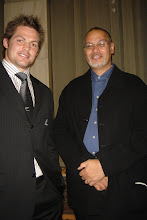After the Treaty signing Hobson quickly made two announcements. The first was used to forestall the claims of the New Zealand Company. Recently arrived in Wellington and busy negotiating their purchase there, the Company represented a threat to the Crown. If their purchases went through then this would present a threat to the Crowns ability to dominate the trade in land.
Using the treaty as a validation of British authority he claimed the North Island by right of cessation. Basically he was claiming Rangatiratanga over the whole island based on the 35 Nga Puhi signatories.
Secondly he chose to beat any potential French claims to with the new settlement at Akaroa. He claimed the South Island by right of 'discovery'... conveniently ignoring the fact that Tasman had beaten Cook by over a century.
From about this point Hobson and the Settlers simply assumed that New Zealand was now a British possession. By the start of 1841, 500 chiefs had signed and seemed to confirm this view. Unfortunately someone forgot to tell everyone about the new state of affiars.
Meanwhile almost every few weeks a new ship arrived from Britain with even more new settlers.
 By 1843 settlements like Nelson and New Plymouth were bursting. The available land was allocated and there was a serious shortage of the promised farms. To make things worse the Government was proving a tough negotiator. After the treaty all previous land claims had to be confirmed. Its representative Spain was quite generous allowing the New Plymouth settlement to claim several tens of thousands of acres, which the Governor promptly cut down to 4500 acres.
By 1843 settlements like Nelson and New Plymouth were bursting. The available land was allocated and there was a serious shortage of the promised farms. To make things worse the Government was proving a tough negotiator. After the treaty all previous land claims had to be confirmed. Its representative Spain was quite generous allowing the New Plymouth settlement to claim several tens of thousands of acres, which the Governor promptly cut down to 4500 acres.The New Zealand Company claims in the south island were even more tenuous. This left the Nelson settlers nervous. They still retained a claim to the fertile Wairau valley. When they pushed through with this claim the local Maori appealed to their protector, Te Rauparaha. He in turn called upon the Governor to setle the dispute and a promise was made to send Commissioner Spain. In an effort to force their claim the Settlers sent surveyors to the Wairau to start the process. Te Rauparaha, now resident in the area authorised the pulling of their pegs and when this did not deter them the burning of their whare.
Enraged the settlers demanded the arrest of the culprit, and Magistrate Thompson issued an arrest warrant for arson. The ill prepared and armed posse arrived and in an incident described at different times as a massacre, and affray and later an incident 22 Europeans died. 17 were executed by Te Rauparaha's ally Rangihaeata. ( in utu for the death of his wife Rongo).
 Settlers were angry and demanded retaliation. Fitzroy's inquiry chose to blame the settlers including the dead Arthur Wakefield and Magistrate Thompson for the incident. The Settler claim to the Wairau was considered to be false thus the charge of arson was wrong. Maori had simply been defending their lands and themselves.
Settlers were angry and demanded retaliation. Fitzroy's inquiry chose to blame the settlers including the dead Arthur Wakefield and Magistrate Thompson for the incident. The Settler claim to the Wairau was considered to be false thus the charge of arson was wrong. Maori had simply been defending their lands and themselves. That was the legal reality. What is important is that even if Fitroy had wanted to he did not have the means to attack the Ngati Toa and their allies. There were thousands of heavily armed warriors in the country and he lacked the military ability to deal with them. For the moment New Zealand was still a Maori country with numerous European enclaves.




No comments:
Post a Comment